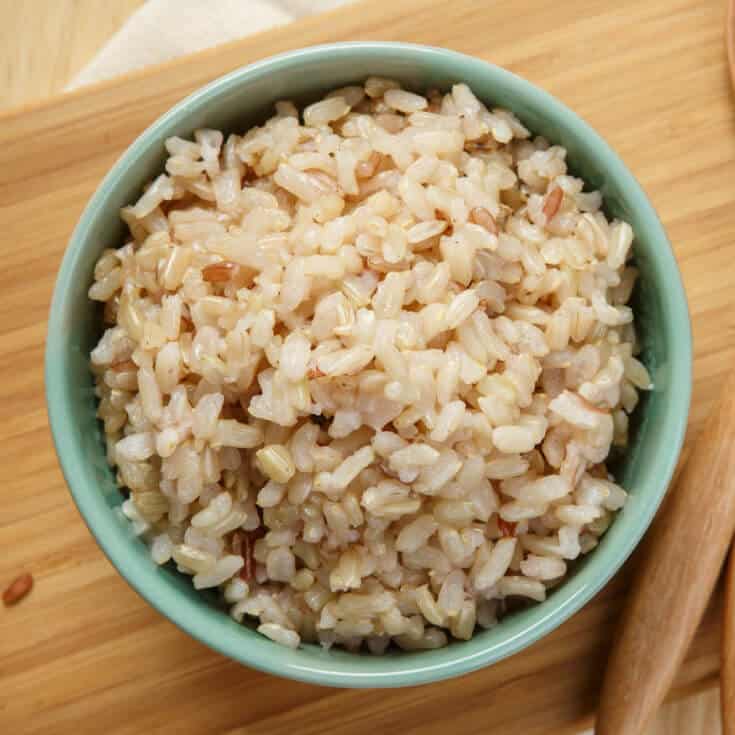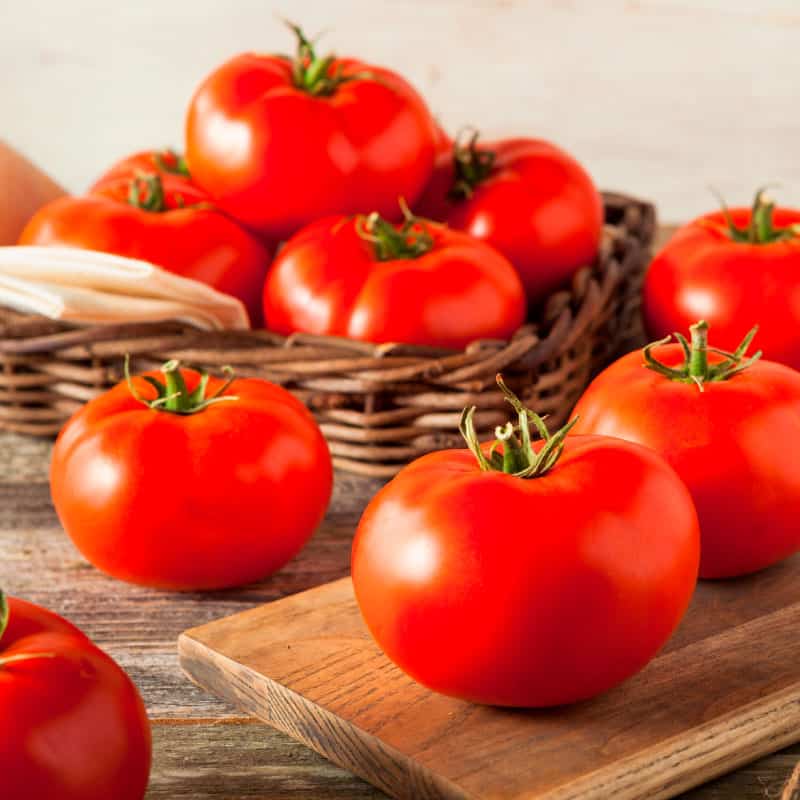This Dr. Axe content is medically reviewed or fact checked to ensure factually accurate information.
With strict editorial sourcing guidelines, we only link to academic research institutions, reputable media sites and, when research is available, medically peer-reviewed studies. Note that the numbers in parentheses (1, 2, etc.) are clickable links to these studies.
The information in our articles is NOT intended to replace a one-on-one relationship with a qualified health care professional and is not intended as medical advice.
This article is based on scientific evidence, written by experts and fact checked by our trained editorial staff. Note that the numbers in parentheses (1, 2, etc.) are clickable links to medically peer-reviewed studies.
Our team includes licensed nutritionists and dietitians, certified health education specialists, as well as certified strength and conditioning specialists, personal trainers and corrective exercise specialists. Our team aims to be not only thorough with its research, but also objective and unbiased.
The information in our articles is NOT intended to replace a one-on-one relationship with a qualified health care professional and is not intended as medical advice.
Bell Pepper Nutrition Helps Combat Disease & Manage Weight
July 23, 2025

The bell pepper is sweet and versatile, but did you know that bell pepper nutrition also helps you fight everything from the common cold to cancer?
This delicious food is familiar to many of us for its sweet taste and ability to be stuffed chock-full of yummy ingredients before being eaten, but the benefits go far beyond taste. Bell pepper nutrition has a ton of incredibly essential vitamins, antioxidants and minerals that help maintain a healthy lifestyle.
If you’d like to reduce your risk of illness, heart disease and cancer, you should probably keep reading about the incredible benefits of bell pepper nutrition.
Bell pepper nutrition facts
The bell pepper is a cultivar group of the Capsicum annuum species of plants, part of the family of foods known as nightshade vegetables. Botanically, it’s a fruit, but nutritionally considered a vegetable.
While the other cultivars within this species are famous for their capsaicin content (which is what gives most peppers and chilis, such as cayenne peppers, their spicy taste), bell peppers contain no capsaicin and are referred to in many cultures as “sweet peppers.”
There are various color varieties of bell peppers, with the most common being red, yellow and green. However, you may find them more infrequently in orange, brown, white and lavender/purple.
There are nutritional differences between the different colors of bell peppers. For example, red bell pepper nutrition is thought to have more than eight times the amount of vitamin A than green bell pepper nutrition.
Perhaps the best thing about bell peppers is their extremely high concentration of antioxidants, including a high amount of vitamin C and vitamin A.
And the best part? When you eat these vitamins rather than take them in supplement form, your body is able to absorb exactly the amount you need and safely expel the rest.
One medium raw, red bell pepper (approximately 119 grams) contains about:
- Calories: 30.9
- Total Carbohydrates: 7.2 g
- Fiber: 2.5 g
- Sugar: 5 g
- Total Fat: 0.4 g
- Saturated Fat: 0.1 g
- Polyunsaturated Fat: 0.2 g
- Trans Fat: 0 g
- Protein: 1.2 g
- Sodium: 4.8 mg (0.2% DV)
- Vitamin C: 152 mg (169% DV)
- Vitamin A: 187 mcg (21% DV)
- Vitamin B6: 0.3 mg (18% DV)
- Folate: 54.7 mcg (14% DV)
- Niacin: 1.2 mg (8% DV)
- Thiamine: 0.1 mg (8% DV)
- Vitamin K: 5.8 mcg (5% DV)
- Potassium: 251 mg (5% DV)
*Daily Value: Percentages are based on a diet of 2,000 calories a day.
Meanwhile, green bell pepper nutrition and yellow bell pepper nutrition provide slightly different but similar nutrient levels.
Health benefits
1. Can help manage weight
Low in calories and high in water and fiber, bell peppers can help keep you full and satisfied, making them a great addition to a weight-conscious diet.
Several types of peppers have been shown to hold anti-obesity traits and help with weight maintenance.
At only 31 calories per serving, bell peppers can provide your body with a huge number of nutrients while minimally impacting the amount of calories you consume in a day. They are also great to use as substitutions for many unhealthy foods.
For example, want a crunch in your mid-morning snack? Try sliced bell peppers instead of potato chips.
2. May reduce risk of chronic disease
Bell peppers, especially red varieties, are rich in antioxidants like vitamin C, beta-carotene and flavonoids, which help neutralize free radicals and protect cells from oxidative stress.
Like so many healthy foods, bell peppers can play a role in reducing your risk of cancer and heart disease when they’re a regular part of your diet. Bell pepper nutrition lists a large number of carotenoids, plant-based antioxidants that help reduce the damage that oxidation causes on your cells.
The red variety of this type of pepper in particular contains very high quantities of beta-carotene, alpha-carotene, lutein and zeaxanthin.
Eating foods high in carotenoids (especially beta-carotene) has been shown to help reduce the risk of cancer and significantly reduce the free radical activity in your body.
Interestingly, one way to further increase the efficacy of antioxidants in your bell peppers is to steam cook them. A 2008 study in California found that steam cooking bell peppers and various other antioxidant-rich foods improved an activity called “bile acid binding capacity.”
Why is that important? Increased bile acid binding capacity means that bile acids are recirculated less as your body processes food, utilizing cholesterol more efficiently and reducing the body’s absorption of fat, thus lowering your risk of heart disease.
Poor bile acid binding capacity is also associated with increased cancer risk, so make sure to steam those bell peppers to get the most out of them you can.
3. Supports healthy eyes
Bell peppers are a top source of carotenoids like lutein and zeaxanthin, which support healthy vision and may help prevent age-related macular degeneration and cataracts.
Bell pepper nutrition contains high levels of the antioxidants lutein and zeaxanthin. Those two antioxidants are must-haves when it comes to keeping your eyes healthy.
Green bell peppers are some of the best natural sources of lutein and zeaxanthin.
Lutein is already well-accepted to help with macular degeneration, the leading cause of blindness in older adults. By filtering out short-wavelength UV light that can easily damage the retina, this antioxidant helps protect the degeneration of eye cells that lead to this disease.
Researchers at Harvard discovered that just six milligrams of supplemented lutein per day can reduce your chance of developing this disease by 43 percent.
For older people who already have cataracts, lutein also can improve vision. Other eye-related benefits include potentially reducing eye fatigue, decreasing light and glare sensitivity, and improving acute vision.

4. May help improve immunity
Thanks to their high vitamin C content, bell peppers help strengthen the immune system, support wound healing and defend against infections.
Bell pepper nutrition also contains more than one sickness-fighting power punch. The high presence of vitamin A is essential to fighting both serious diseases, such as cancer, as well as more short-term illnesses, such as the common cold.
Much research has been conducted on the immune-boosting benefits of vitamin A supplementation, especially in low- and middle-income nations where children are extremely susceptible to vitamin deficiencies that lead to illness and disease. In one study out of London, vitamin A supplementation decreased childhood mortality by an astonishing 24 percent, while also noting that a deficiency in this nutrient increased the children’s immunity to things such as diarrhea and measles.
Another child-related study in Colombia found that the country saved more than $340 million when supplementing just 100 children with vitamin A that would have otherwise been deficient.
If you undergo a significant amount of stress, bell peppers may also help improve your immunity because of their high vitamin C content. People who have high amounts of vitamin C in their systems are less likely to contract everything from colds to cancer, and vitamin C is essential to correcting the weakened immune system associated with high stress levels.
In general, bell peppers are one food that can help reduce inflammation in your body, which is actually at the root of most diseases.
5. Helps maintain mental health
The vitamins in bell pepper nutrition are also beneficial in maintaining prime cognitive health. It’s why bell peppers are considered one of the best brain foods.
One such benefit of bell peppers is the high presence of vitamin B6, which increases the levels of serotonin and norepinephrine, sometimes referred to as the “happy hormones.” High levels of these hormones are associated with improved mood, higher energy levels and more concentration, while low levels have been commonly linked with several mental disorders, such as ADHD.
A vitamin B6 deficiency has also been shown to contribute to cognitive impairment that comes with age and may even increase risk of Alzheimer’s and/or dementia.
6. Helps keep skin glowing and healthy
Not only is a large amount of vitamin C good for your immune system, but it’s also great for your skin. This, along with the carotenoids found in bell peppers, improves the health of your skin and promotes collagen production.
More specifically, the vitamin C and beta-carotene in bell pepper nutrition promote collagen production and protect the skin from premature aging and sun-related damage.
People with high levels of vitamin C have skin that is less dry and wrinkled, and they also are at a lower risk of developing skin cancer.
7. Promotes healthy pregnancy
Bell pepper nutrition contains a good amount of folate, a vital nutrient for pregnant mothers. In fact, the daily recommendation for folate goes up approximately an additional 50 percent in pregnant women because of its role in preventing birth defects and keeping unborn children healthy.
Not only does folate help reduce birth defects, but it also promotes healthy neural tube development, helps a child grow to an appropriate birth rate before delivery, and causes the face and heart to develop properly.
8. Lowers blood pressure
Bell peppers are a natural source of potassium, a mineral that helps balance sodium levels and relax blood vessel walls. These are two key actions that can contribute to maintaining healthy blood pressure levels.
Research has found that extracts of Capsicum annuum (including green and red bell peppers) significantly inhibited angiotensin-converting enzyme (ACE), a key mechanism in blood pressure regulation. For example, yellow and red bell pepper extracts showed up to 84 percent ACE inhibition, suggesting a potential for vasodilation and blood pressure reduction in humans, though this effect was observed in the lab rather than in human subjects.
9. Boosts digestive health and protects the colon
The fiber in bell pepper nutrition supports regular bowel movements and nourishes beneficial gut bacteria. The antioxidants and anti-inflammatory compounds bell peppers possess may also help protect the colon lining and reduce the risk of gastrointestinal issues over time.
In a randomized dietary intervention, 14 healthy adults abstained from bell peppers and paprika, then consumed a standardized amount of fresh red bell pepper. Researchers measured urinary excretion of apocarotenoid and capsianoside metabolites, biomarkers originating from bell pepper phytochemicals.
These metabolites appeared rapidly post-intake and mostly arose via gut microbial metabolism in the large intestine, indicating the peppers’ components reached the colon and were transformed by the colonic microbiota.
10. May reduce risk of diabetes
Bell peppers have a low glycemic index and are rich in antioxidants like quercetin, which may improve insulin sensitivity and reduce oxidative stress. Both are linked to better blood sugar control and a lower risk of type 2 diabetes.
11. Combats inflammation and arthritis
Bell peppers contain anti-inflammatory phytonutrients, such as capsaicinoids, carotenoids and vitamin C, which may help reduce inflammation in the joints and connective tissue. These characteristics potentially could benefit individuals with arthritis or other inflammatory conditions.
12. Help prevent anemia
Red bell peppers are high in vitamin C, which enhances the absorption of non-heme iron from plant foods. When paired with iron-rich foods, bell peppers can help improve iron status and reduce the risk of iron-deficiency anemia.
How to add to diet
All bell peppers are not grown equally, so be cautious in your shopping. They routinely make the dirty dozen list of foods identified by the Environmental Working Group as having the largest concentration of pesticides when bought in non-organic form.
Buying your bell peppers organic is not only important because of the presence of pesticides, but because organic bell peppers contain a much better antioxidant load. Researchers in Poland discovered in 2012 that organic bell peppers contain “significantly more vitamin C, total carotenoids, β-carotene, α-carotene, cis-β-carotene, total phenolic acids and flavonoids compared with [non-organic varieties].”
As with most fruits and vegetables, try to choose bell peppers without any obvious damage. The brighter the flavor, the fresher your peppers will be.
The preparation methods are endless with these handy vegetables. You can eat them raw, roast them, grill them or anything in between.
As mentioned earlier, steaming them particularly improves their nutritional value, so it’s a good idea to do that fairly often when adding peppers to your recipes.
One of the oldest and most popular recipes for the bell pepper is the stuffed pepper, first found in a Boston cookbook in 1896. This recipe for Quinoa Stuffed Peppers is simple and delicious.
You also can substitute life-giving foods for starchy, unhealthy ones, like in this Vegetarian Egg Casserole. This spin on a traditional breakfast dish is especially useful for feeding larger groups.
Another version of the stuffed pepper that is a great option if you’re looking for something filling is this Stuffed Peppers with Rice recipe.
Here are some more bell pepper recipes to try:
- Turkey-Stuffed Bell Pepper
- Hungarian Goulash
- Sweet Potato Hash
- Cobb Salad with Avocado Dressing
- Calabacitas
Risks and side effects
It is possible to have an allergy or intolerance to bell peppers. If you find you have any symptoms of an allergic reaction immediately after eating bell peppers, such as eczema, itching, nasal congestion or digestive problems, stop eating them, and contact your doctor immediately.
If you experience cramping, bloating, diarrhea or vomiting right after eating bell peppers, you may also have a non-allergic intolerance to them. Be sure to contact your doctor right away if you ever find this happening to you.
Frequently asked questions
Is it OK to eat bell peppers every day?
Yes, it’s generally safe and beneficial to eat bell peppers every day. Their high levels of vitamins A and C, along with fiber and antioxidants, support multiple aspects of health. Just be mindful of variety and any digestive sensitivities.
What are the benefits of eating bell peppers every day? What do bell peppers do for your body?
Eating bell peppers daily can provide your body with essential vitamins and antioxidants that support eye health, immunity, digestion, skin health and more. Their anti-inflammatory and low-calorie properties make them ideal for long-term wellness.
Are bell peppers high in sugar?
Bell peppers are relatively low in sugar compared to other fruits and vegetables. Even red bell peppers, which are the sweetest, only contain around five to six grams of sugar per medium pepper and have a low glycemic index.
Which bell pepper color is the healthiest?
Red bell peppers are considered the most nutrient-dense because they are fully ripened and contain the highest levels of vitamin C, beta-carotene and other antioxidants. However, all colors offer valuable nutrition.
What do the different colors of bell peppers mean?
The color of a bell pepper reflects its ripeness and nutritional profile. Green peppers are harvested early and are slightly bitter. Yellow and orange are more mature and sweeter.
Red peppers are fully ripened, the sweetest, and highest in nutrients like beta-carotene and vitamin C.
Can bell peppers upset your stomach?
For some people, especially those with sensitivities or IBS, raw bell peppers may be hard to digest. Cooking them can reduce this issue.
Most people tolerate bell peppers well and even experience improved digestive health when consuming them regularly.
Are bell peppers good for weight loss?
Yes, bell peppers are low in calories and high in fiber and water, which can help you feel full and reduce overall calorie intake. They’re a nutritious, weight-loss-friendly food that also supports metabolic health.
Is it better to eat bell peppers raw or cooked?
Both raw and cooked bell peppers have benefits. Raw peppers retain more vitamin C, while cooking can enhance the bioavailability of some antioxidants like carotenoids. Including both forms in your diet offers the most nutritional benefit.
Can dogs eat bell peppers?
Yes, dogs can safely eat bell peppers in moderation. Red, green and yellow bell peppers are non-toxic and can be a healthy snack for dogs, offering vitamins A and C. Avoid spicy varieties and seasonings.
Do bell peppers need to be refrigerated?
Yes, bell peppers should be stored in the refrigerator to maintain freshness and extend shelf life. Keep them in the crisper drawer in a produce bag for best results.
How long do bell peppers last in the fridge?
Whole bell peppers can last about one to two weeks in the refrigerator. Once cut, they should be used within three to five days for optimal freshness and safety.
Can you freeze bell peppers?
Yes, bell peppers can be frozen for long-term storage. You can freeze them raw or after lightly blanching. Frozen bell peppers are great for cooked recipes like stir-fries, soups and stews.
Are bell peppers a fruit?
Yes, botanically speaking, bell peppers are fruits because they contain seeds and develop from the flowering part of the plant. However, they are commonly classified as vegetables in culinary use.
Why do bodybuilders eat bell peppers?
Bodybuilders often include bell peppers in their diets because they are low in calories, high in fiber, and packed with antioxidants and vitamin C, which can help reduce inflammation and support recovery and immune health.
Are bell peppers good for diabetics?
Yes, bell peppers are excellent for people with diabetes. They have a low glycemic index, are rich in fiber, and contain antioxidants that support insulin sensitivity and help regulate blood sugar levels.
Final thoughts
- You can find bell peppers in various colors, the most common being red, green and yellow. The different colors carry different nutritional content.
- Bell peppers are the only member of their family that aren’t spicy, because they lack capsaicin.
- Bell pepper nutrition is stuffed (nutritionally) with incredibly high amounts of vitamin C and A, which contribute to a healthy immune system and reduced risk of disease.
- The antioxidants in bell peppers also keep your eyes and skin healthy and can even keep your brain functioning at peak levels.
- The folate in bell peppers is great for pregnant moms to keep their babies growing the right way.
- It is especially important to purchase organic bell peppers, because they have an exceptionally high pesticide occurrence otherwise. Organic bell peppers also have significantly more antioxidants than non-organic versions.
- It is possible to be allergic to bell peppers, although this is fairly uncommon.












